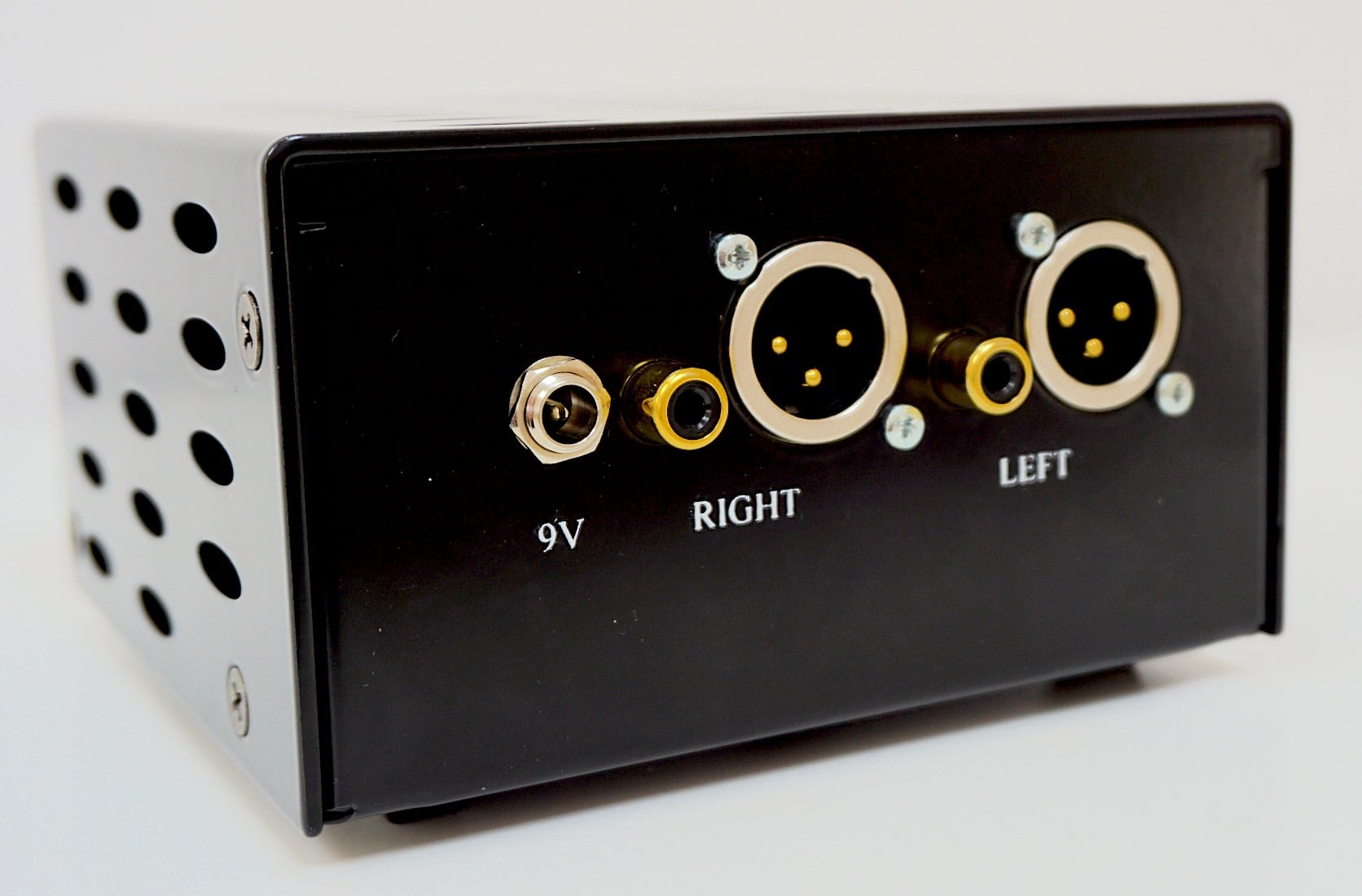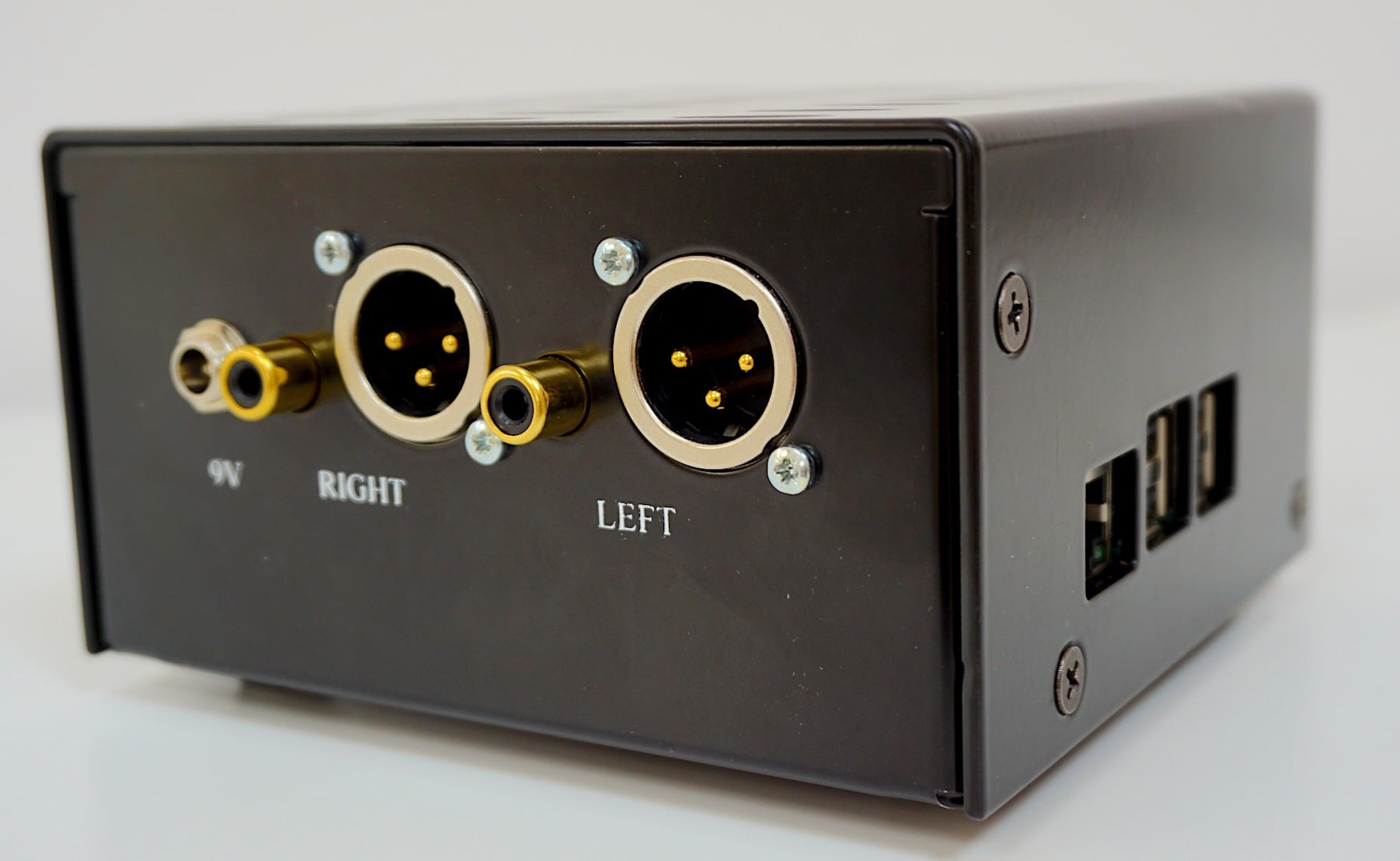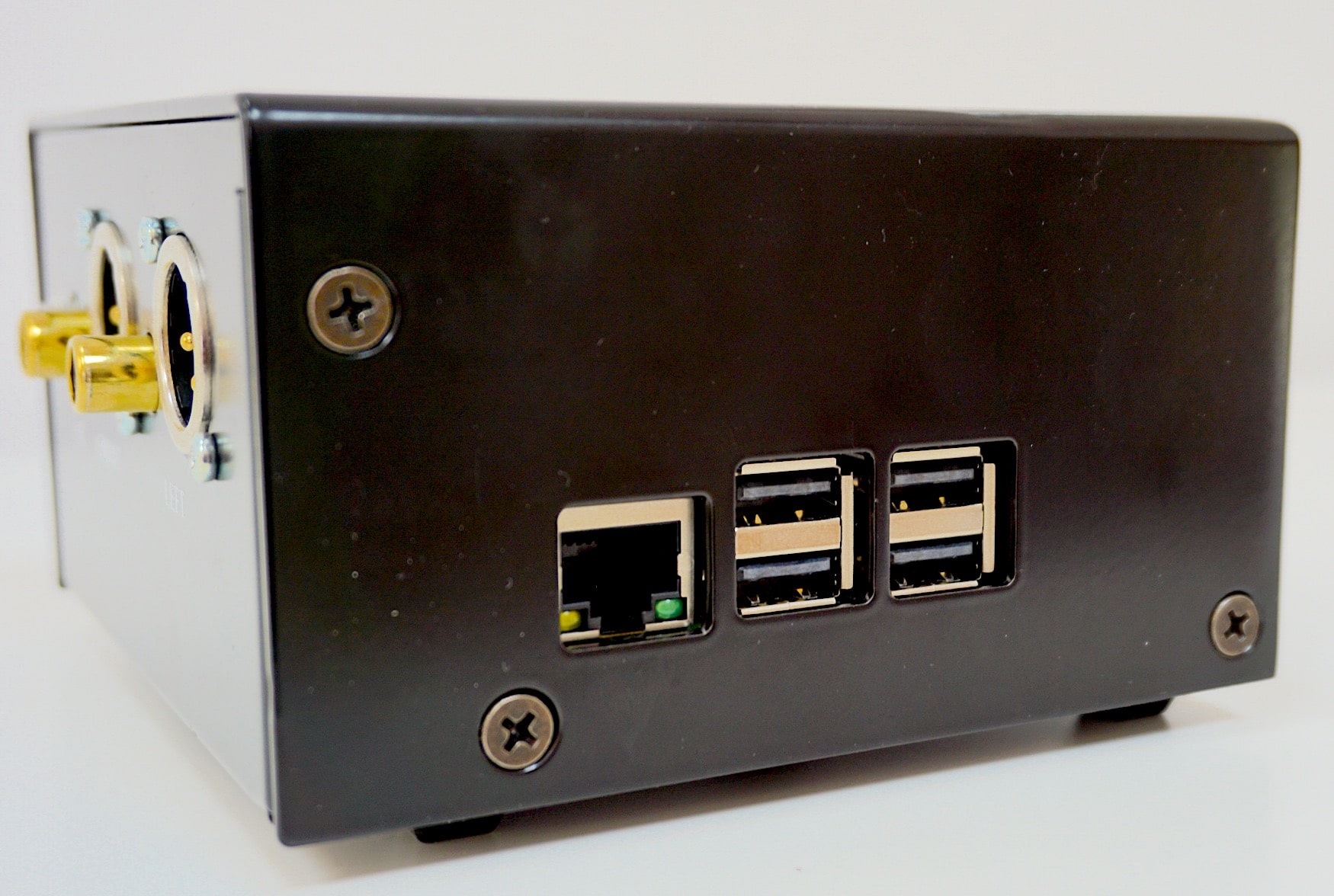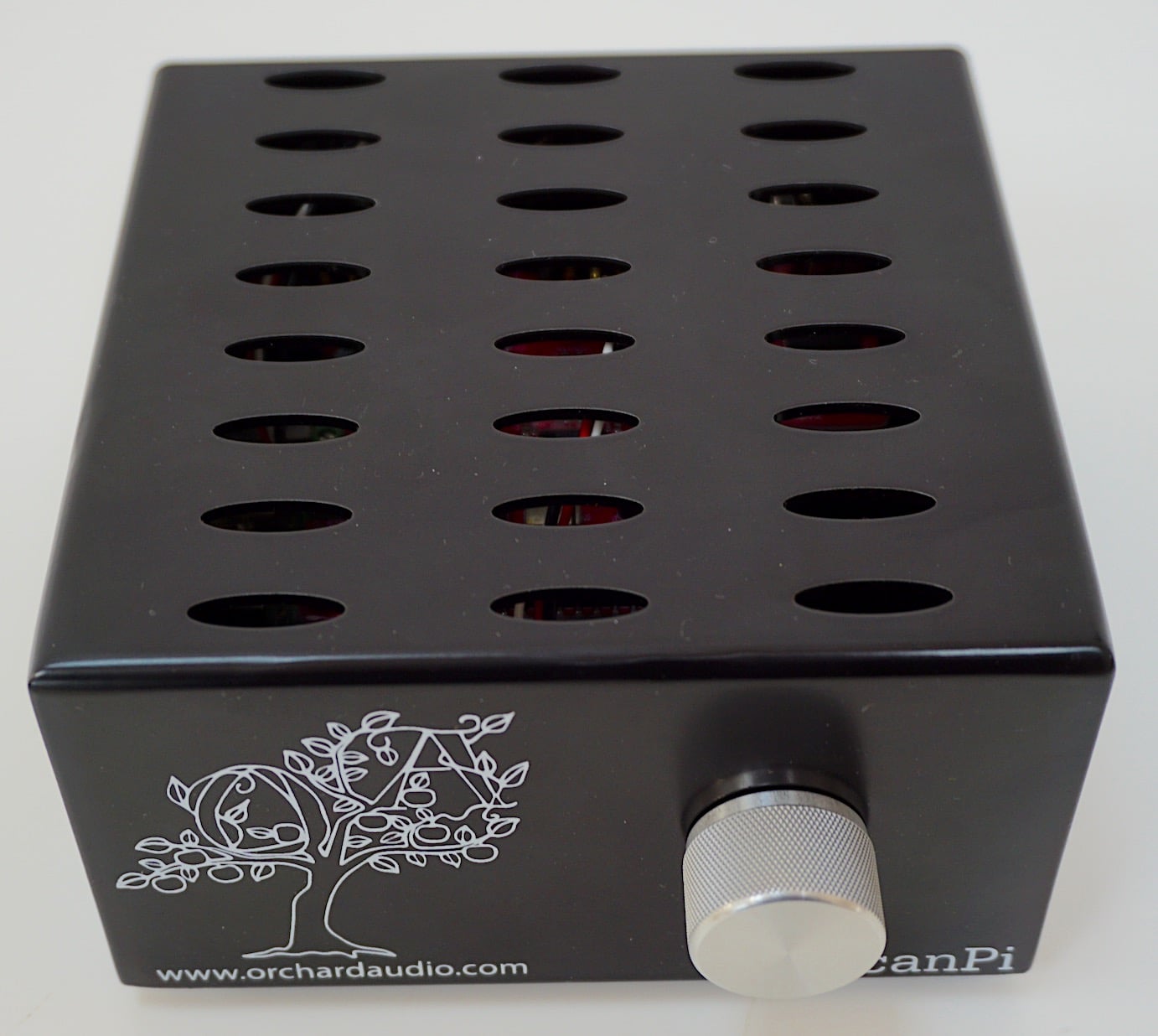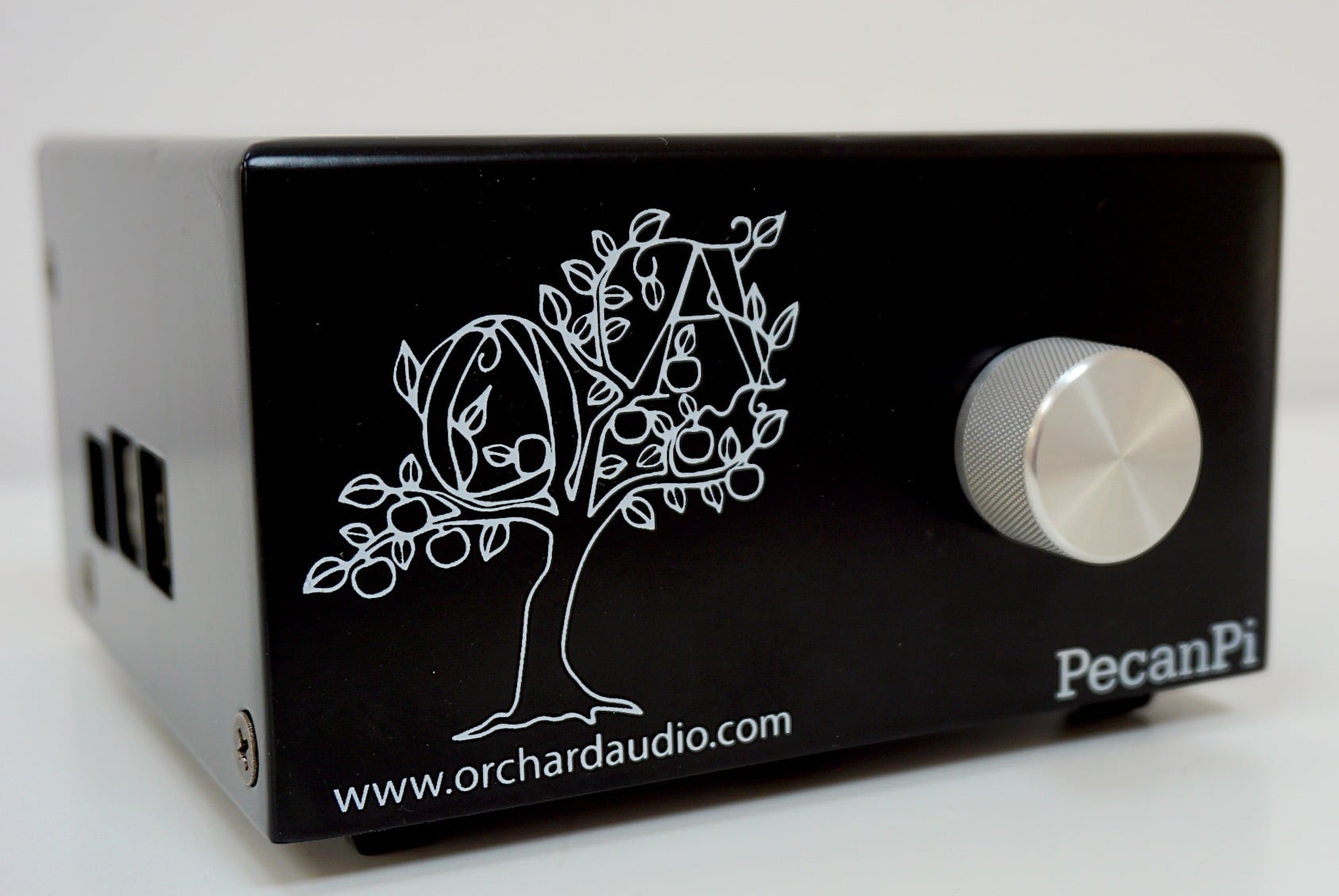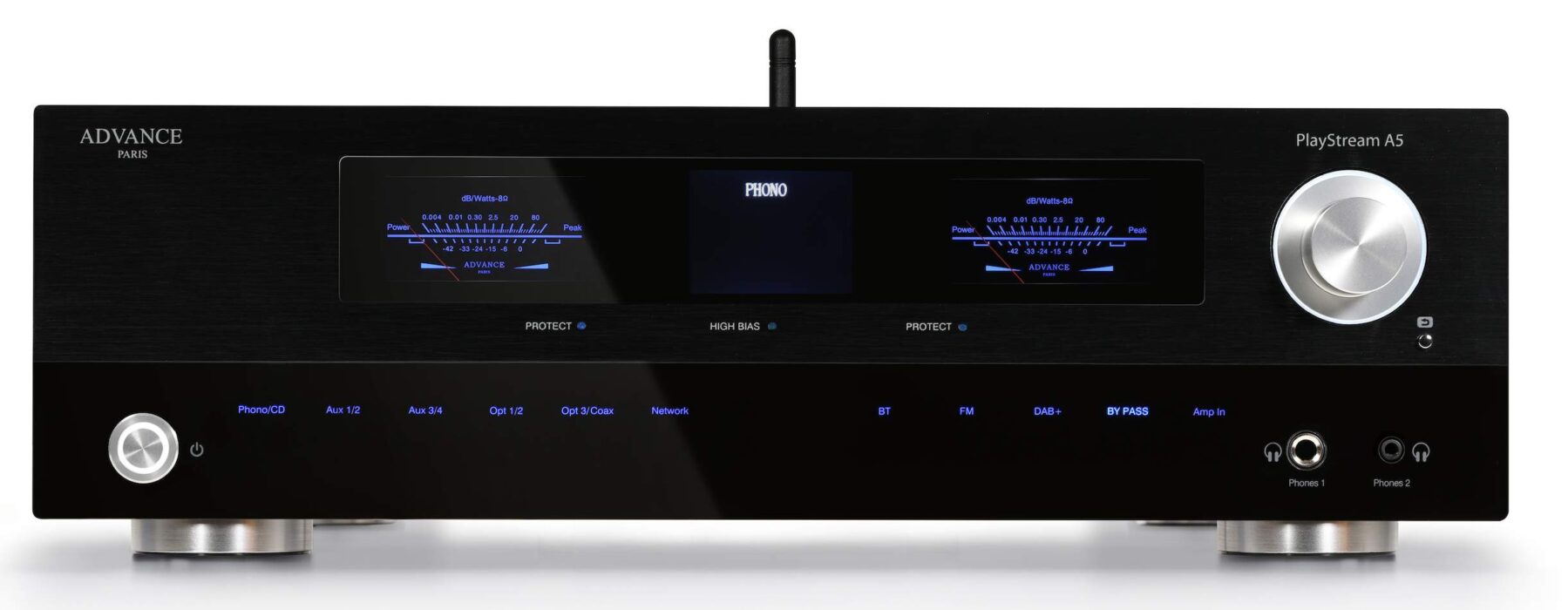The Article
PecanPi DAC/Streamer from Orchard Audio
1st May 2019
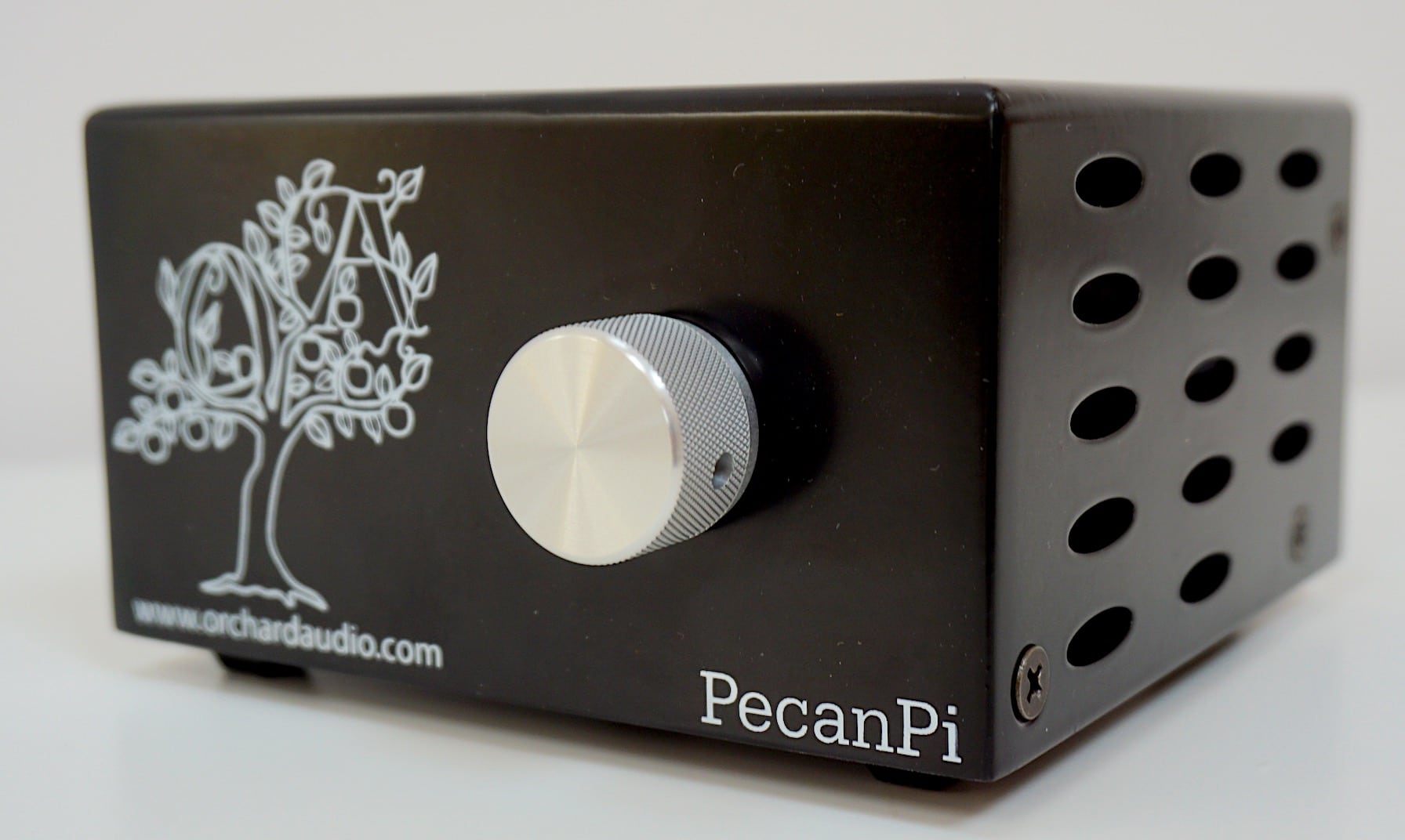
A small footprint unit based upon Raspberry Pi hardware, Paul Rigby reviews the PecanPi
The PecanPi DAC/Streamer is a neat, relatively diminutive unit that can be controlled wirelessly using your phone, tablet or computer and can be connected to a stereo amplifier, AV receiver or powered audio system, as well as headphones. A set of convertor cables are included to attach headphones to the rear-mounted RCA ports. This is not a DIY project but a fully formed and ready to buy unit (if you want a DIY project, check out this link)
I did ask the designer and company boss, Leo Ayzenshtat, about the missing headphone socket and he commented, “I did consider this, to add one to the design would be a lot more expensive then to offer the RCA to headphone adapter. The purpose of this device is to offer a level of performance that nobody else currently has in this price range. I believe that the device accomplishes this with flying colours as no other devices on the market get you 130dB of SNR at anywhere near this price.”
Spanning 125 x 125 x 70mm, the unit supports PCM signals up to 24bit/192kHz. DSD is not natively supported so the software will automatically convert it to PCM. The guts of the system is based upon dual Burr-Brown PCM1794As.
Despite the streaming feature, the PecanPi does not support Bluetooth. I asked Ayzenshtat about that too, “There is a Bluetooth module built into the device but there is no software currently available for the Raspberry Pi (computer that runs the whole system) that can do both streaming and Bluetooth audio at the same time. Additionally Bluetooth audio behaves in such a way that it will automatically resample your high resolution files all the way down to 44.1kHz and 16bits if the signal strength is not good enough to support the higher resolutions. Since Bluetooth has a range of about 25 feet this resampling would occur quite often. This would be undesirable for a high performance audio device. Since the Bluetooth module is built into the player a person with enough technical knowledge could reconfigure it to be a Bluetooth player if they so desire.”
Throughout the set-up process for the PecanPi, there was an overarching atmosphere of the hobbyist that infused the operation. Depending on your point of view this can either be seen as good-old-fashioned-honest-hand-made product or you might see it as clunky and a touch amateurish. To label it the latter would be harsh but I could see some users viewing it that way. That is, some people want an easy-to-use, slick, fast-to-install product with lots of hand holding and swish interfaces while others prefer and admire the sort of backstreet engineer approach to hi-fi which is seen as ‘worthy’ and more attractive than the shiny corporate approach. Some users feel that they can directly relate to the one-man-band type of hi-fi company. These users often feel that the corporate entities out there are distant and out of touch with the ground-level audiophile.
This product is a touch divisive, therefore.
Part of the feeling for the hobbyist ambience is down to the product itself as the Raspberry Pi board can be clearly seen through the vents of the chassis. When switched on, it glows at you like a caged piece of rabid Lego, just waiting to be unleashed.
You have a choice of interfaces to run the PecanPi. I was presented with Volumio, Rune Audio, piCorePlayer, Roon End Point or moOde Audio. I chose Volumio. Loading that app to my iPhone 8 was a breeze. The app quickly auto-sensed the PecanPi and I was ready to roll. Installing the same onto my MacBook laptop was more convoluted. I had to access the company website, download the file, move to another site, download an installer, insert a SD card, run the installer which then loaded the program to the SD card and then install Volumio from there.
Again, that process is hobbyist in nature. Anyone with a basic level of technical knowledge will find the process easy but some, possibly more lifestyle-orientated hi-fi users, will be faced with that install sequence and will be immediately put off by it. They won’t bother to install it to their laptop. As a reviewer who just wants to get on with a sound test, I admit to finding the process an irritation. I just wanted to review the blasted streamer. Not start looking for installers to copy code to SD cards.
[Note: Since this review was published, Leo Ayzenshtat has emailed me with this helpful note, “With Volumio you do not need to install the app at all you can just open a browser on any device and go to http://volumio.local and it will pull up the interface, so the app is really not needed at all. These instructions will be included with the unit.”]
The design of the product also has that feel. There is no power or standby switch here. You plug in the PecanPi and you’re away. Oh and there’s no mute button either. Ayzenshtat, again, “The device is muted when the volume control knob is turned fully counter-clockwise. Otherwise the volume is adjustable from 0 to -80dB.”
The rear of the unit offers RCA and balanced outputs along with the switch mode power supply socket. The left side of the cubed chassis provides a cluster of four USB input sockets arranged in groups of two. An Ethernet socket is found here too.
I do have a slight issue with the power socket which I feel may be too close to one of the RCA outputs. If you have a bulky cable termination running in to it, there might possibly be space issues. The same could be said of the USB input clusters.
According to Ayzenshtat, “I had close to 20 people evaluate the unit with over 75% of them using the RCA connector and not one of them had any issues, hence at this time I don’t plan on making any changes. For future versions of the product I will move the power connector further away. Those who want the highest level of performance probably already have equipment that supports the XLR standard and would want to use that, to have a fully balanced signal path.”
I selected good quality Tellurium Q cables and had no fit issues during the review process. Then again, I also tested the unit with Gekko cables and I did have problems, the power termination was push to an angle. You would be wise to check your preferred cables first.
Also, the chassis is very light indeed at 450g so if you are using substantial cables that feature a dense cable core, then the cables may just pick up the PecanPi and throw it around the room like King Kong waving Faye Wray around the Empire State building. You might want to consider Blu Tacking the chassis to the shelf.
SOUND QUALITY
I began with a streamed file pushed from my iPhone 8 and Marvin Gaye’s Mercy Mercy Me sent as a compressed AAC.
Despite the recessed midrange and treble and the subdued bass – all factors that have to be accepted when listening to a compressed file – I was pleasantly surprised by the overall quality of the sound. There was a little but not a great deal of the usual harsh, cutting and edgy upper midrange response. In fact, midrange presentation was relatively well behaved in that area. Neither was bass boomy or irregular. It kept a strict position within the soundstage.
Kylie Minogue’s All The Lovers offered a more open presentation that allowed a measure of air to infuse the upper mids. Tambourine effects in this area provided an extension to the upper areas of the soundstage. Bass was slightly bloomy in approach because of the file type but the PecanPi prevented any real damage to the vocal or the effective cello sequence.
I then plugged in a USB stick into the side of the PecanPi and used my iPhone 8 to access it and view the files available to play from the stick – a nice touch. I began with the dynamic song Hedonism from Skunk Anansie at 16bit/44.1kHz. The output was big, bold and powerful in tone through my Monitor Audio floor standers, while bass was heavy, impressive and secure. Principally because the source was solid state and plugged directly into the unit. Detail was good for the price, with an admirable level of midrange insight.
I then played Looking for a Home, two guys and two guitars or, more accurately, Kevin Greeninger & Dayan Kai at 24bit/192kHz. The string manipulation from the guitars was impressive as was the silence sitting behind the pair: the contrast set up a soundstage heavy with emotion from this serious song. The sense of clarity was also excellent as the PecanPi took advantage of the superior sound source file while the imagery that set the singers and their instruments on the soundstage was excellent. Even the bass-infused foot stomps from the guys, keeping a beat, were easily heard here. The sense of tonal balance allowed me to increase the gain without having my ears bitten off.
I then moved to DSD and Kevin Bibb’s Meet Me At The Building at DSD 64.
If anything, DSD output (despite the non-native processing) was the most impressive file output across the entire sound test as inherent noise was very low. Small and subtle details were able to flow easily from the rear of the mix and the 3D structure around the stereo image added layers and a busy, almost market square feel to the song which seemed packed with people and instruments. A party atmosphere, if you will. Harmonicas here, acoustic guitars there, an accordion, mandolin, 57 varieties of percussion but throughout the PecanPi allowed this detail to reach the ear unimpeded.
I moved from the USB stick to my laptop and replayed the Kevin Greeninger & Dayan Kai track and found that the laptop-sourced track was also impressive in terms of overall sound quality. The vocal performance was effective, emotive and in the harmony sections, layered. OK, the sound output wasn’t quite to the same level as the direct USB stick source but admirable nevertheless. Playing Carol Kidd’s A Nightingale Sang in Berkeley Square, the acoustic guitar solo offered more impressive string transients on the USB-sourced file. There was a touch of extra focus and precision there.
I then plugged the unit into the balanced outs. In general, noise levels dropped further. In specific terms, the Skunk Anansie track exhibited greater dynamic force and bass impact when compared to the RCA outputs, with an impressive weight in and around the lower frequencies. There was plenty of upper midrange detail on offer too with a subtle tambourine accompaniment that was easily picked up in the rear of the mix.
Eric Bibb’s DSD track was packed full of insight and detail with a rich tonal response that consisted of full and weighty percussion, throaty vocalisms and an evocative slide guitar.
I then unplugged the interconnects from the amplifier and plugged in the headphone convertor cables. Listening through my Sennheiser HD800 reference headphones to the Kevin Bibb DSD file streamed via my laptop I was impressed by the tonal balance. That is, bass was a significant part of the soundstage here and played a full part in this busy song. Detail was present in a layered and 3D fashion as hand bells could easily be discerned at the rear of the soundstage.
Finally I accessed the Internet Radio option via Volumio and listen to baroque music from, would you believe it, a station called Audiophile Baroque at 320kbps MP3. Despite a slight midrange illumination during woodwind highlights at higher volumes, the midrange was clear and concise with enough instrumental separation to produce a pleasant flow of sonic information. Moving right along, bass from BBC Radio 1 didn’t travel too far down the lower frequencies but what there was had a concise and tidy demeanour. Hence, it didn’t hit you around the head but it did a good impression of lower bass to fool your ears.
CONCLUSION
Be aware that, although a Ethernet wired connection is used, if your hi-fi is near a router or Wi-Fi extender and the controller is a phone, tablet or laptop, you may hear a slight underlying noise layer that sits within the music. This effect will be more noticeable with better quality equipment.
In general terms, you might not get coax and optical sockets or AV-related features such as HDMI and some might miss Bluetooth but the PecanPi is a budget product and one that makes the very most of the build budget by focusing on sound quality. It’s also compact in size which, in itself, will be a major bonus for those short of space. Finally, it also offers an excellent array of software interface options for those looking to blend this streamer into a wider digital chain.
The PecanPi sits within an attractive price point and at that price it offers plenty: impressive sonic abilities being top of the list. Specifically, an attractive blend of dynamic force, rich imagery and layered detail. A bit of a bargain, then.
ORCHARD AUDIO PECANPI DAC/STREAMER Price: $399.99 with Preorder Discount. Otherwise $499.99 as a final price. Pre-Order pricing will end on 15 May. There are also options which increase the price, for full info see the product's store page: orchardaudio.com
Website: orchardaudio.com
GOOD: general sound quality, balanced output, small footprint, value for money, headphone output, interface options
BAD: missing digital features, underlying digital noise
RATING: 8
Don’t forget to check out my Facebook Group, The Audiophile Man: Hi-Fi & Music here: www.facebook.com/groups/theaudiophileman for exclusive postings, exclusive editorial and more!]
REFERENCE
iPhone 8
MacBook
Benchmark DAC2 HGC
Arcam irDAC-II
Astell & Kern AK120 (Red Wine modded)
Leema Essentials CD Player
Rega Brio-R amplifier
Q Acoustics 3020i speakers
Spendor A1 speakers
Monitor Audio Silver 300 speakers
Black Rhodium cables
Blue Horizon Professional Rack System
Harmonic Resolution Systems Noise Reduction Components

